Switching to Biosimilars for RA, Part Two: My Experience as an ‘Outlier’ Trying (So Far) 3 Biosimilars
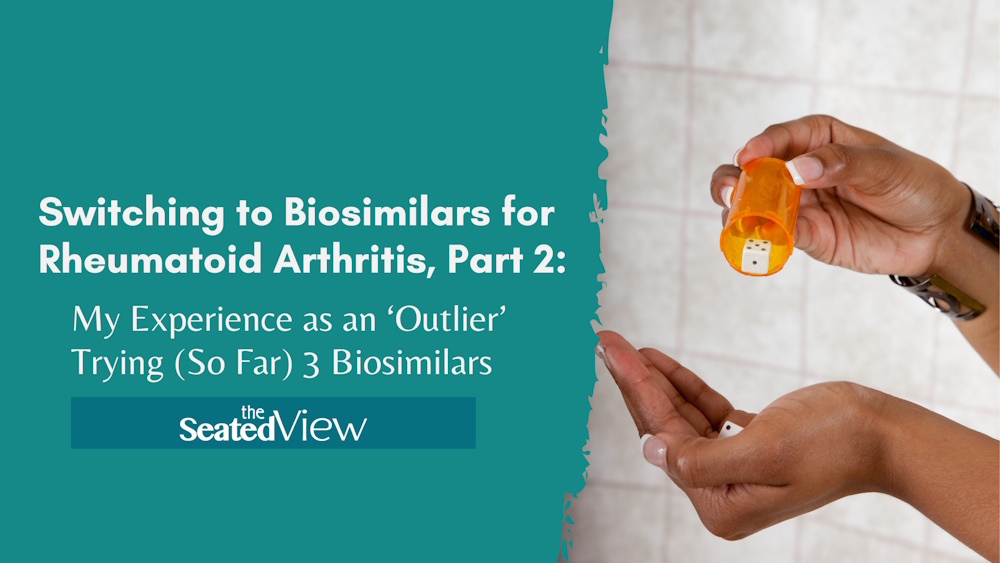
In April 2023, I received a letter from the Ontario government with information about the new biosimilar switching policy. I had until the end of the year to switch from the biologic medication I take to treat my rheumatoid arthritis (RA) to a biosimilar. I did my best to be hopeful and believe it would work as well as, or perhaps even better than, the biologic. Unfortunately, my experience has so far been… Complicated. Here is my story.
Read Part One: You May Have To Switch to a Biosimilar for Rheumatoid Arthritis. Here’s Why.
For the past 19 years, I have received vital financial support from the Trillium Drug Program for my biologic — a drug that many years ago literally and metaphorically saved my life. My body is severely damaged by lifelong RA and it therefore doesn’t like change, is a side effect magnet, and often reacts differently than others. Because of this, I was very nervous about messing with the treatment that had worked for so long. But learning the facts about biosimilars (outlined in the first part of this series), helped my anxiety. Knowing that most of my rheumatologist’s patients and many in the global autoimmune arthritis community had switched with no problems also did much to help me approach the switch with optimism. However, the last six months have shown that I’m an outlier, differing from the norm.
As I discuss my experience, keep in mind that people react differently to medication. What works for me might not work for you and vice versa. When you need to choose a biosimilar, talk to your rheumatologist about the options.
My First Biosimilar Switch Experience
In early August 2023, I tried my first biosimilar and some of the side effects I’d had with my biologic lessened. But unfortunately, it brought along another one, wildly aggravating one of my comorbidities. A previously mild and manageable case of gastroparesis became much worse. In my experience, side effects sometimes simmer down over time, so I persisted with several more doses of the medication.It got worse. By October, I’d reason point when I was always aware of how awful I felt. I was done and asked my rheumatologist for help.
We discussed applying for the Ontario Government’s Exceptional Access Program (EAP) to continue funding my biologic, but it requires that you try two biosimilars without success before considering your case. So: on to the biosimilar #2.
What Happened When I Switched to My Second Biosimilar
My rheumatologist knows that I want to make my own decisions about treatment, so she sent me a list of biosimilar options available in Canada. This level of choice and control might not work for you, but it’s necessary for me. I researched what’s available, compared which did not contain citric acid — Humira does and whoa, Nellie, does it sting going in — the manufacturing companies, and which drugs had undergone shortages. In the end, I narrowed it down to two options and chose the one that was easier to pronounce.
The first shot went well. But seven days after the second injection, I woke up with a severe asthma flare and the cause seemed obvious reasons. First, because I had felt fine the day before, had not eaten anything that triggers my asthma, nor had I been exposed to a scent or chemical trigger. Secondly, my experience with Biologics and biosimilars has taught me all the signs that the drug is working in my body. With my biologic, these arrived within 48 hours of the injection, but with the first biosimilar, they arrived exactly one week later. And here, seven days after my first injection, a mysterious asthma flare came out of nowhere. My rheumatologist was suspicious, as well, and when discussing it with my respirologist, she also agreed that the likely cause of my asthma flare was the biosimilar (plus prescribed a whopping dose of prednisone to help my lungs improve).
I was an outlier yet again. I had considered trying one more injection, but after four months of experimenting with my treatment, both I and my body were exhausted. With three smart women agreeing on the plausible cause of my asthma going wiggy, I threw in the towel, went back on Humira, and my rheumatologist sent in the EAP application form.
I was rejected. Then my rheumatologist retired.
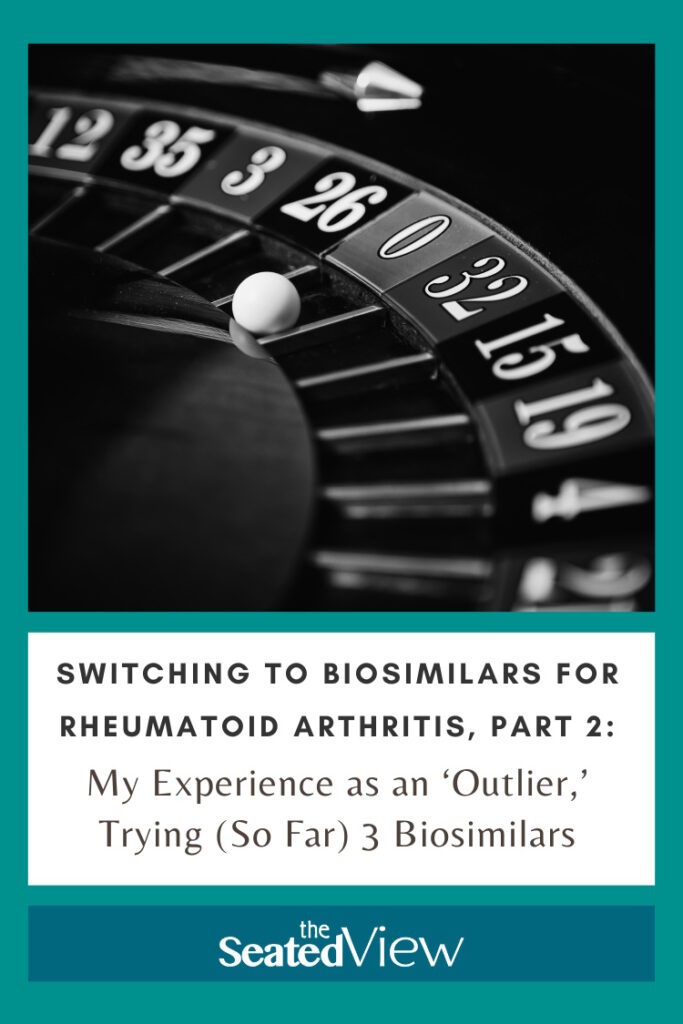
Next Steps and How My RA’s Doing
The EAP decision was based on a mistake with the date and my unusual way of taking this medication. My body metabolizes medications quite quickly and I have therefore taken my biologic at shorter intervals than the recommended 14 days. I’m not alone in this — many people need to tweak the interval to get optimal results, but that initial review of my application seemed to have followed policy guidelines, rather than rheumatology practice. I’ve worked in government (and been a client of multiple agencies), so I understand that although the first application may be rejected, there is often room for appeal, something I may explore in the future.
While we wait for the second application to go through the system, my new rheumatologist and I agreed to try a third biosimilar. I requested one that’s available in 20 mg doses (instead of 40 mg) so I can take it two days apart every two weeks. Spreading out the medication may reduce the side effects, as well as shorten the interval between doses by two days. This is still longer than when I took Humira, but I’m willing to try.
Six months into what’s starting to feel like an unreasonable experiment that’s gambling with my health, there are signs that my RA is not as controlled by biosimilars as it was when I took a biologic. I feel heavier, something that I’ve learned when skipping my biologic due to illness is a sure sign that I need more medication. Also, my toes look more sausage-like than they have in almost 20 years, and when the weather causes me pain, it’s now settling in my joints (as opposed to fibromyalgia pain).
It feels like my RA is waking up and I’m scared.
To be continued….
Tag: autoimmune arthritis, biologics, biosimilars, comorbidities, inflammation, ontario, rheumatoid arthritis, rheumatoid disease
4 Comments
Read More
Discover what else I've been writing about...


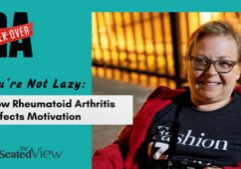

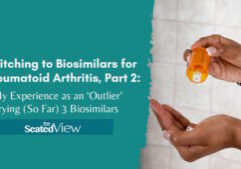








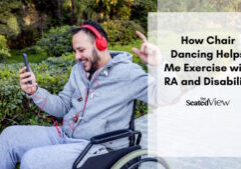


Oh, no, Lena! I just read both parts of this story and I’m appalled for you. It would be a tragedy if you had to go back to living in the kind of pain you did before you started the biologic that saved your life.
Since it seems like you’ll be forced into further experiments, I wonder if you’ve thought about trying a JAK inhibitor, like Rinvoq. I’ve taken it since 2020, when I was diagnosed with subacute cutaneous lupus, and my rheumy suspected it was triggered by the Orencia injection I’d been taking. Stopped Orencia, started Rinvoq, and the SCLE rash cleared up within a few months. And, at least as important, there was no change in my rheumatoid arthritis pain or other symptoms. It remained–and remains–under control. I’ll always have SCLE, so it will always be a consideration in any new medication I take.
I hate that you have to change away from the one that worked so miraculously well for you. I hope they’ll let you switch back to it sooner rather than later. Take care, my friend.
Dear Lene , I am sorry that you have been going through this biosmilar trauma. It’s so frustrating , I applaud your perseverance.As always a well written article.



Take care
I also did not have a good experience with biosimilars. I was getting biologic infusions. At the time I was using orencia and it stopped being effective My rheumatologist switched me to reminded but medicare said you must try the biosimilar first. It did not go well I had a very bad allergic reaction swollen lips and throat hives and could not breath. Fortunately the infusion was administered in a hospital and everything worked out. Two weeks later I was able to use regular reminders and everything worked well for two years and then it became non effective.
Sorry for the automatic spell check the biologic was remicade.